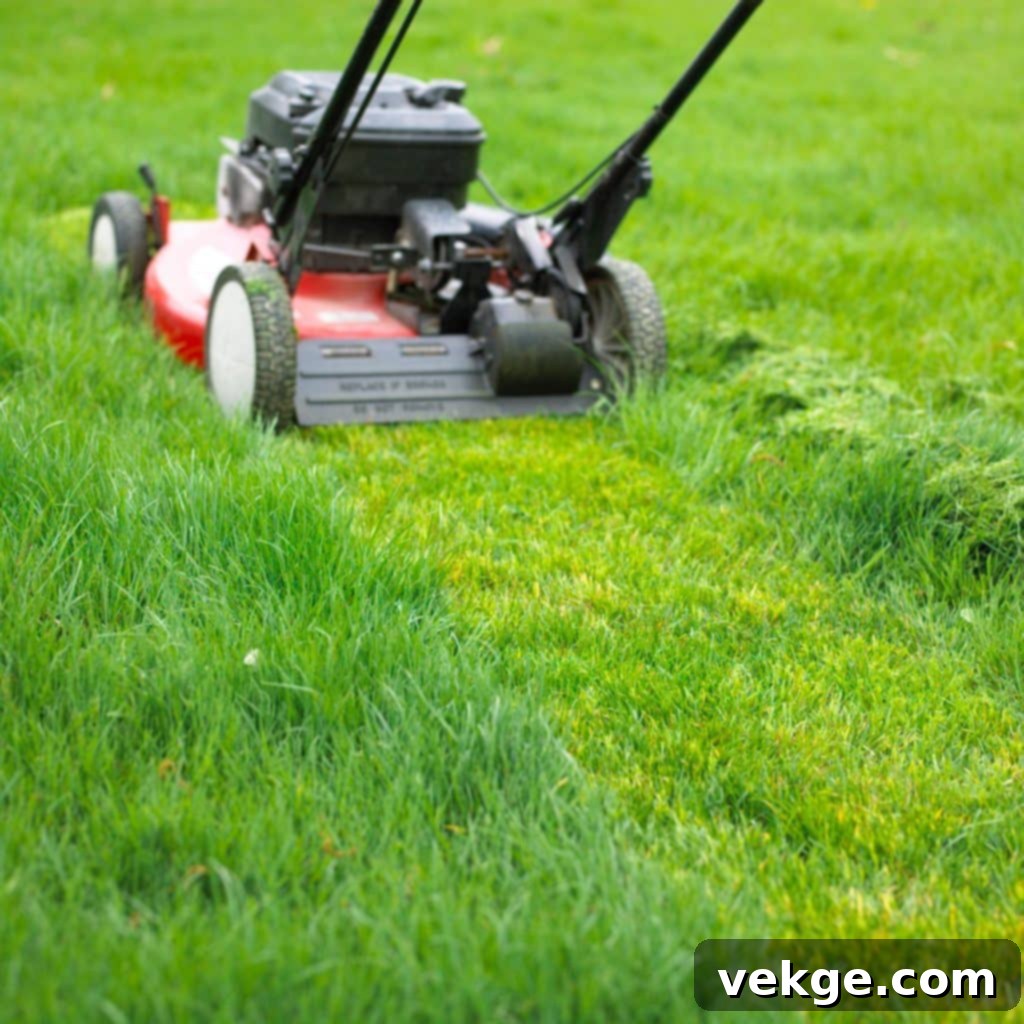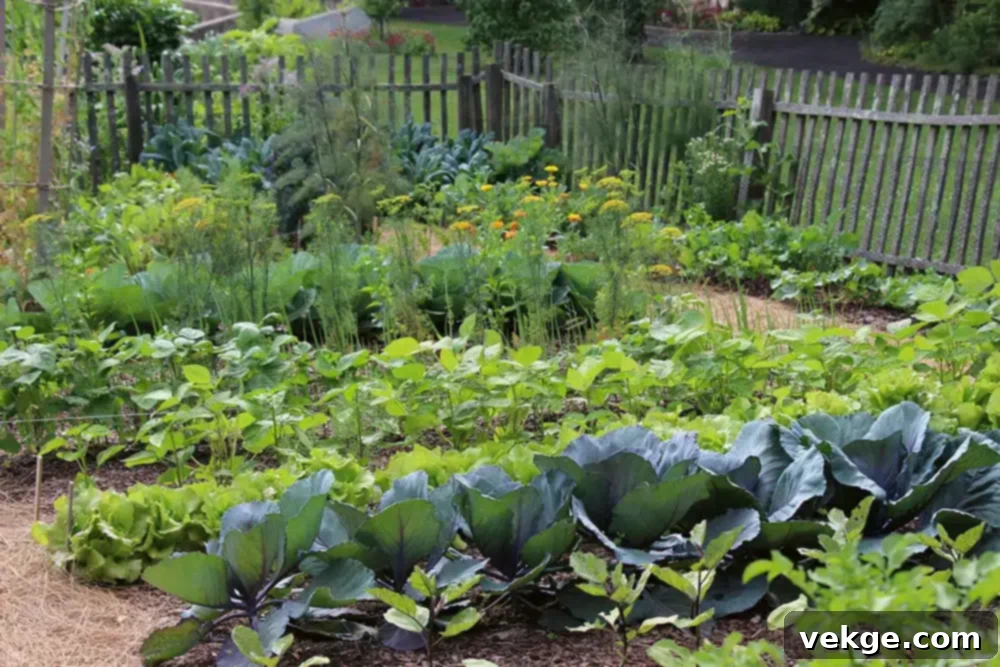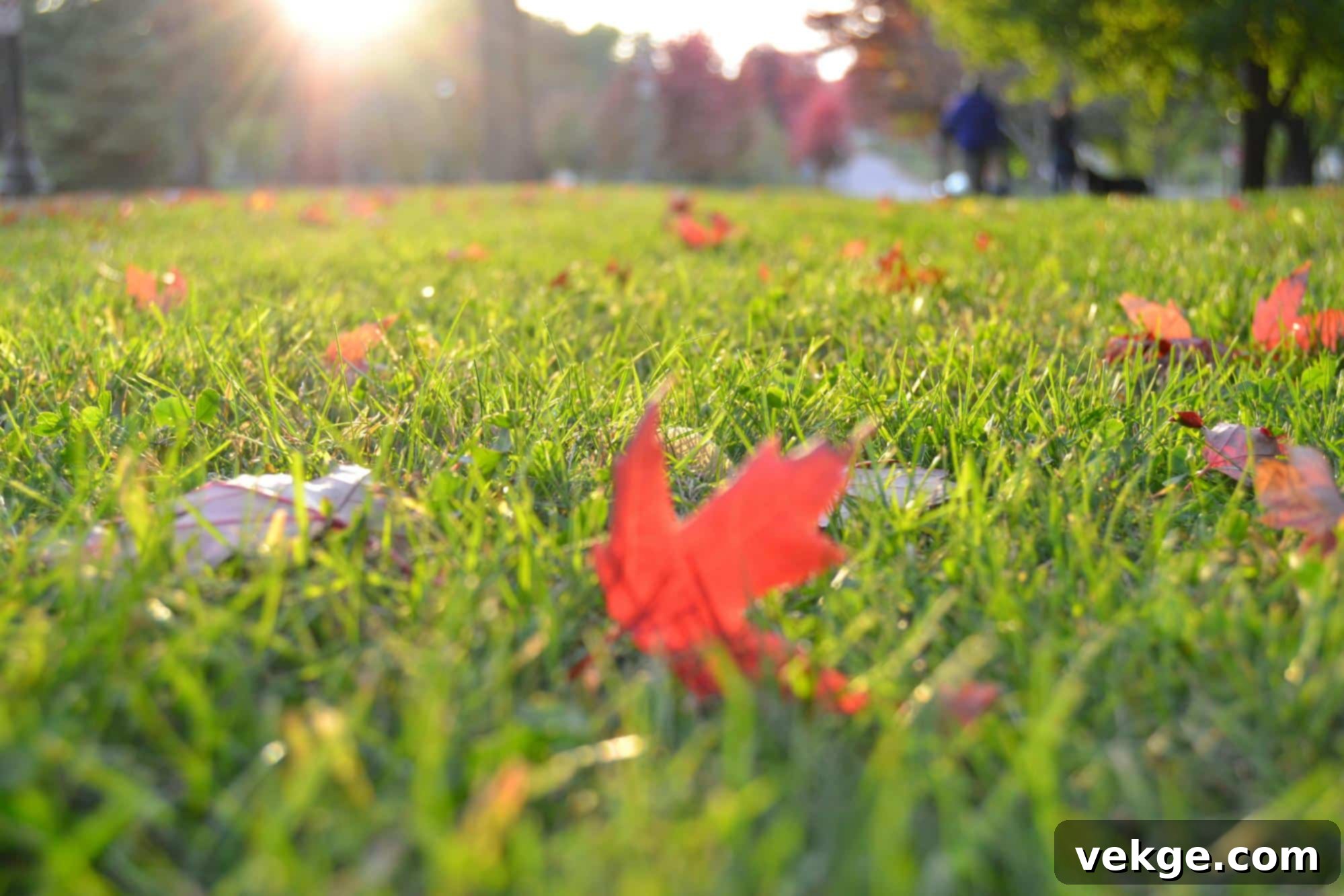Sustainable Lawn Care: Your Ultimate Guide to Eco-Friendly Weed Control and a Thriving Green Space
For many homeowners, the aspiration of a lush, vibrant green lawn is a cherished dream. However, the pursuit of this ideal has historically relied on conventional lawn care methods and weed control strategies that often involve synthetic chemicals. These substances, while effective in the short term, can have detrimental effects on our environment, polluting waterways, harming beneficial insects, and impacting the overall biodiversity of our ecosystems.
In recent years, a growing awareness of these environmental costs has led to a significant shift towards more sustainable and eco-friendly approaches. These innovative methods offer a compelling alternative, enabling us to cultivate beautiful, healthy lawns without compromising the planet’s well-being. By embracing natural processes and working in harmony with nature, homeowners can achieve stunning results while contributing positively to local ecosystems.
This comprehensive guide delves into cutting-edge, natural, and sustainable ways to nurture your lawn and effectively manage weeds. We’ll explore practices that not only ensure your green space flourishes but also thrives as a resilient, self-sustaining part of your home environment, all while minimizing your ecological footprint. Join us as we uncover the secrets to a truly green and healthy lawn.
The Foundational Art of Proper Mowing for a Resilient Lawn

One of the simplest yet most profoundly effective strategies for cultivating an eco-friendly lawn is mastering the art of proper mowing. This isn’t just about cutting grass; it’s about setting the stage for a healthier, more robust lawn that naturally resists weeds and diseases. Adjusting the height of your mower blades is a critical first step. Taller grass blades, typically maintained at 2.5 to 3 inches or more, provide essential shade to the soil surface. This shading effect dramatically reduces water evaporation, meaning your lawn requires less frequent watering. More importantly, it creates an unfavorable environment for weed seeds, preventing them from germinating by blocking the sunlight they need to sprout. This method, often overlooked, is a straightforward step towards a more sustainable lawn.
Beyond blade height, consider the frequency of mowing. Instead of scalping your lawn once a week, aim to remove no more than one-third of the grass blade length at any given time. This promotes deeper root growth, making your turf more resilient to drought and stress. Grasscycling – leaving the grass clippings on the lawn – is another key component. These clippings are a natural source of nitrogen, returning valuable nutrients to the soil and reducing the need for synthetic fertilizers. This not only nourishes your lawn but also diverts yard waste from landfills, further enhancing your eco-friendly efforts.
For those serious about precision and efficiency in their lawn care, investing in quality equipment can make a significant difference. Kubota lawn mowers, for instance, are renowned for their engineering that delivers precise and efficient cuts. Such equipment ensures even turf, which not only looks aesthetically pleasing but also contributes to the overall health of the grass, making it an excellent choice for maintaining a healthy and attractive lawn that aids in your comprehensive gardening and eco-friendly efforts. Regular blade sharpening also ensures clean cuts, preventing damage to grass blades that could lead to disease.
Implementing Integrated Pest Management (IPM) for Natural Solutions
Integrated Pest Management (IPM) represents a sophisticated, holistic framework for managing lawn pests and diseases. Far from being a reactive approach, IPM emphasizes prevention, monitoring, and the strategic use of the least toxic methods, reserving chemical interventions as an absolute last resort. This philosophy aligns perfectly with eco-friendly lawn care, focusing on understanding the ecosystem rather than simply eradicating symptoms. IPM involves several key steps: identifying pests accurately, monitoring their populations, and setting action thresholds before intervention.
At its core, IPM encourages the cultivation of a balanced ecosystem that naturally keeps pest populations in check. This includes promoting beneficial insects, such as ladybugs, lacewings, and predatory mites, which prey on common lawn pests like aphids, grubs, and mites. By creating habitats, planting diverse native species, and avoiding broad-spectrum pesticides that harm these natural predators, you significantly reduce the need for chemical interventions. Monitoring your lawn regularly for early signs of pest activity allows for targeted, non-chemical solutions, such as hand-picking larger pests, applying insecticidal soaps for minor infestations, or introducing nematodes to control grubs.
While prevention is key, understanding when and how to apply specific solutions for persistent weed issues remains essential within an IPM strategy. For instance, managing aggressive weeds like crabgrass, dandelion, and similar broadleaf invaders requires careful consideration. When non-chemical methods like hand-weeding or cultural practices aren’t sufficient, exploring highly targeted options can be necessary. Products like Quinclorac DF, a post-emergent herbicide specifically designed for turfgrass, can provide an option for those seeking precise, focused weed management strategies that align with an IPM approach when other measures have been exhausted. The key is to use such solutions judiciously, only when necessary, and precisely according to instructions, minimizing environmental impact and protecting non-target species.
Nourishing Life: Cultivating a Healthy Soil Ecosystem

The vitality of your lawn is inextricably linked to the health of its soil. Think of the soil as the foundation upon which your green space is built; a robust foundation leads to a resilient, thriving lawn. By actively fostering a vibrant soil ecosystem – one teeming with beneficial microorganisms, fungi, and organic matter – you can naturally enhance your lawn’s inherent resilience against pests, diseases, and environmental stresses like drought. A rich, biologically active soil is capable of holding more water, making nutrients available to plants, and suppressing pathogens, all without chemical intervention.
Key practices that significantly promote soil health include composting and aeration. Composting involves enriching your soil with decomposed organic material, such as kitchen scraps, yard waste, and leaves. This enriches the soil structure, improves water retention, and introduces a diverse array of beneficial microbes that help break down nutrients and make them available to grass roots. A healthy soil microbiome is crucial for nutrient cycling, promoting vigorous plant growth, and disease suppression. Regular topdressing with a thin layer of compost can dramatically transform your soil over time.
Aeration, the process of creating small holes in the lawn, alleviates soil compaction. Compacted soil restricts air, water, and nutrient movement to the grass roots, leading to shallow root systems and weakened turf. By aerating, you improve gas exchange, allow water and fertilizer to penetrate deeper, and encourage deeper, stronger root growth. This, in turn, makes your lawn more resistant to drought, disease, and the invasion of weeds that often thrive in poor soil conditions. Together, these practices lead to a more sustainable, low-maintenance, and naturally vibrant lawn that truly thrives from the ground up, reducing the need for intensive interventions.
Embrace the Benefits of Organic Fertilizers
Organic fertilizers are not merely an alternative; they are a cornerstone of genuinely eco-friendly lawn care. Unlike their synthetic chemical counterparts, which provide a quick burst of readily available nutrients that can leach into waterways and disrupt soil biology, organic fertilizers work in harmony with nature. They release nutrients slowly and steadily, nourishing your lawn over an extended period. This gradual feeding process is essential for building a stronger, more resilient turfgrass system from the roots up, without causing sudden growth spurts that can stress the plants.
The primary advantage of organic fertilizers lies in their ability to significantly improve soil health over time. They are derived from natural sources such as compost, manure, bone meal, blood meal, fish emulsion, and seaweed. These materials not only supply essential macro and micronutrients but also enrich the soil with organic matter, which is vital for fostering a thriving microbial community. These beneficial microbes break down the organic material, making nutrients available to plants, improving soil structure, enhancing water retention, and increasing the soil’s capacity to suppress plant diseases. This creates a self-sustaining cycle that continually improves your lawn’s health.
By promoting a healthy soil food web, organic fertilizers help cultivate a lawn that is better equipped to ward off weeds and pests naturally, reducing the need for chemical interventions. They also minimize the risk of nutrient runoff, protecting local water bodies from pollution. Transitioning to organic fertilizers might require a bit more patience initially, as their effects are gradual, but the long-term benefits – a robust, self-sustaining, and environmentally sound lawn – are immeasurable and contribute significantly to a healthier planet. Furthermore, organic options are generally safer for children and pets who frequent the lawn.
Explore the Strategic Role of Companion Planting

Companion planting, a time-honored horticultural practice, extends its significant benefits beyond vegetable gardens and into the realm of eco-friendly lawn care and natural weed control. This strategy involves strategically planting certain types of plants together to achieve mutual benefits, such as natural pest deterrence, improved growth, enhanced nutrient cycling, and even better soil quality. By integrating diverse plant species into or around your lawn, you can create a more resilient and less chemically dependent ecosystem, fostering biodiversity and ecological balance.
For example, interspersing fragrant herbs like thyme, mint (in contained beds to prevent spreading), or rosemary around the perimeter of your lawn can act as natural repellents for various types of insect pests, including mosquitoes and some lawn-damaging insects. This reduces the reliance on synthetic pesticides, safeguarding beneficial insects and overall biodiversity. Similarly, planting clover alongside your grass can offer multiple advantages: clover is a nitrogen-fixing legume, meaning it pulls nitrogen from the air and deposits it into the soil, naturally fertilizing your lawn and reducing the need for external nitrogen applications. It also acts as a living mulch, suppressing weeds by outcompeting them for space and light and contributing to a softer, greener turf.
Furthermore, selecting drought-tolerant ground covers in specific areas where grass struggles can enhance the overall health and appearance of your green space while providing excellent weed suppression. Companion planting fosters biodiversity, attracting pollinators like bees and butterflies, and beneficial insects, which are crucial for a balanced garden ecosystem. This approach transforms your lawn from a monoculture into a dynamic, interactive landscape that actively contributes to ecological health and significantly reduces maintenance efforts, creating a more sustainable and vibrant outdoor living area.
Embracing a ‘Less is More’ Philosophy for Sustainable Lawns
Adopting a ‘less is more’ approach to lawn care is not just a trend; it’s a powerful philosophy that yields significant environmental benefits and often a more resilient, naturally beautiful lawn. By consciously reducing the frequency and intensity of certain maintenance tasks—such as mowing, watering, and fertilizing—you not only conserve valuable resources like fuel, water, and energy but also dramatically minimize your lawn’s ecological footprint. This mindful approach encourages your lawn to develop its natural vigor and adaptability, rather than relying on constant human intervention, leading to a more self-sufficient landscape.
Less frequent mowing allows grass to grow taller, promoting deeper root systems that are more tolerant to drought and stress. It also provides a greater opportunity for beneficial insects, pollinators, and other small wildlife to thrive, turning your lawn into a miniature biodiverse habitat. Reducing watering encourages your grass to seek water deeper in the soil, making it more self-sufficient and reducing the need for external irrigation. Similarly, minimizing the use of synthetic fertilizers helps prevent nutrient runoff and fosters a healthier soil microbiome that can sustain the lawn naturally, reducing dependence on chemical inputs.
This approach moves away from the uniform, manicured aesthetic towards a more naturalistic look that integrates seamlessly with local flora and fauna. It promotes wildlife diversity within your garden and contributes to a healthier local ecosystem. By letting go of the need for perfection and embracing a slightly wilder, more natural growth pattern, you create a beautiful, sustainable outdoor space that requires less effort and offers greater ecological value. This philosophy saves you time and money while simultaneously benefiting the environment.
Water Wisely: The Art of Efficient Irrigation
Efficient watering practices are absolutely paramount for eco-friendly lawn care and effective weed control. Overwatering is a common mistake that can lead to a host of problems: it not only wastes a precious resource but also encourages the proliferation of shallow-rooted weeds, promotes fungal diseases, and contributes significantly to nutrient runoff, which ultimately harms local waterways and aquatic ecosystems. Conversely, proper watering encourages deep root growth, which is the cornerstone of a healthy, drought-tolerant, and weed-resistant lawn, allowing it to withstand dry periods more effectively.
The golden rule for watering your lawn is to water deeply but infrequently. Instead of light, daily sprinkles, aim for longer, less frequent watering sessions that allow water to penetrate several inches into the soil. This encourages grass roots to grow deep, making them more resilient to dry spells and better able to access nutrients. A good practice is to water in the early morning, typically between 4 AM and 10 AM. This timing minimizes water loss due to evaporation and allows the grass blades to dry before nightfall, reducing the risk of fungal diseases. Avoid watering in the middle of the day when evaporation rates are highest, or late in the evening which can promote fungal growth.
Observe your lawn for signs of thirst, such as wilting grass or a bluish-grey tint, before watering. Consider installing a rain gauge to track natural precipitation and adjust your irrigation schedule accordingly. Smart irrigation systems, equipped with soil moisture sensors or weather-based controllers, can further optimize water usage, ensuring your lawn receives precisely what it needs, when it needs it, preventing both over and under-watering. By adopting these wise watering strategies, you conserve water, reduce weed pressure, and cultivate a stronger, healthier lawn that can withstand environmental challenges naturally, all while saving on your water bill.
Harnessing Natural Weed Suppressants and Controls

Moving away from chemical herbicides, there are numerous natural methods to suppress and control weeds effectively and safely. These techniques not only manage unwanted plants but also enhance the overall health and sustainability of your lawn and garden ecosystem. The goal is to create an environment where desirable plants thrive and naturally outcompete weeds, establishing a balanced and resilient green space without the need for harsh chemicals.
Mulching is a highly effective, non-chemical weed control strategy. Applying a layer of organic mulch – such as wood chips, shredded leaves, or straw – around garden beds and trees adjacent to your lawn, or even incorporating fine mulch into less trafficked lawn areas, provides multiple benefits. Mulch blocks sunlight, preventing weed seeds from germinating and emerging. It also helps retain soil moisture, moderates soil temperature, and slowly decomposes to enrich the soil with organic matter. For lawn areas, grasscycling (leaving clippings) serves as a natural, fine mulch that discourages weeds from taking hold, while also returning valuable nutrients.
Another excellent natural weed suppressant comes in the form of ground covers. Plants like clover, creeping thyme, or sedum, when strategically incorporated, can not only beautify your lawn but also act as living mulches. They spread to cover bare soil, thereby outcompeting weeds for light, water, and nutrients. Clover, as mentioned earlier, also fixes nitrogen, naturally fertilizing the surrounding grass and improving overall soil health. For individual weeds that do emerge, hand-pulling is an essential and highly effective method, especially when the soil is moist. Early detection and removal prevent weeds from establishing deep root systems or going to seed, which would perpetuate the problem. Tools like weeding forks can make this task easier and more efficient, particularly for perennial weeds.
For tougher, broadleaf weeds in non-lawn areas or pathways, natural alternatives like horticultural vinegar (acetic acid) can be used as a spot treatment. It’s important to note that vinegar is non-selective and will harm any plant it touches, so careful, precise application is key to avoid damaging desired plants. Corn gluten meal can also be used as a pre-emergent herbicide, preventing weed seeds from germinating by inhibiting root development. Applied in early spring, before weeds emerge, it can be an effective natural option. By combining these natural methods, you can significantly reduce weed pressure and maintain a pristine, chemical-free lawn that is safe for your family, pets, and the environment.
Community Involvement and Education: Amplifying Green Efforts
Finally, the broader impact of eco-friendly lawn care practices can be significantly amplified through community involvement and education. Individual efforts are powerful, but collective action fosters a culture of sustainability that benefits everyone and every green space. Sharing knowledge, resources, and experiences with neighbors and local community members can accelerate the adoption of these beneficial practices, creating a ripple effect of positive environmental change that extends far beyond individual property lines.
Organizing workshops or informational sessions on topics like composting, organic fertilization, or drought-tolerant landscaping can empower more residents to make sustainable choices. Community gardens, shared tool libraries for eco-friendly equipment (like manual reel mowers or aerators), or even neighborhood ‘green lawn’ challenges can foster engagement and friendly competition. By exchanging tips on local soil conditions, native plant choices, and successful natural pest control methods, communities can collectively overcome challenges and reinforce commitment to environmental stewardship, building a stronger, more informed network of green-minded individuals.
This collaborative approach helps to normalize sustainable lawn care, making it the standard rather than the exception. By working together, communities can create more beautiful, resilient, and sustainable green spaces that not only enhance aesthetic appeal but also provide vital habitats for local wildlife, improve air and water quality, and foster a deeper connection between people and nature. This collective effort ensures that the benefits of eco-friendly practices extend far beyond individual property lines, nurturing a healthier environment for all, including future generations, and building a legacy of environmental responsibility.
Final Thoughts: Cultivating a Sustainable Legacy
Embracing eco-friendly lawn care and natural weed control is more than just a maintenance routine; it’s a commitment to environmental stewardship and a rewarding journey towards a healthier, more beautiful outdoor space. By adopting the practices outlined in this guide—from mindful mowing and fostering rich soil to utilizing organic fertilizers, companion planting, and wise watering—you actively contribute to the preservation of our environment. You help protect biodiversity, conserve precious resources, reduce pollution, and ultimately ensure a healthier planet for current and future generations.
The transition to a more natural approach to lawn maintenance does not mean compromising on the beauty or functionality of your green space. On the contrary, it often leads to a more robust, resilient, and genuinely vibrant lawn that reflects the natural world. It means stepping away from a constant battle against nature and instead, working in tandem with it. By understanding and respecting ecological principles, you can cultivate a thriving, sustainable outdoor sanctuary that not only enhances the aesthetic appeal and value of your home but also provides invaluable ecological benefits to the earth.
Your lawn can be a testament to sustainable living, a vibrant ecosystem where life flourishes, teeming with beneficial insects and robust plants. Take pride in knowing that every conscious choice you make for your lawn contributes to a larger legacy of environmental responsibility. Start today, and watch your green space transform into a beacon of natural beauty and ecological harmony, a truly healthy and sustainable extension of your home.
